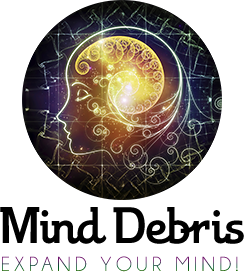Shedding a New Light on Dark Matter
Researchers have now untangled the quantum entanglement and time-reversal problems through a crystal that has the potential to help figure out the most extraordinary mysteries of the universe.
A new study published in Science shows the US National Institute of Standards and Technology (NIST) and its functioning depend on two complicated procedures: time-reversal and quantum entanglement.
New Light on Dark Matter
The quantum crystal scientists have created with maximum sensitivity can be used as a dark matter detector. Dark matter is a mysterious thing that accumulates most of the matter in the universe.
This microscopic blue crystal measures just 200 micrometres wide.
The tiny blue crystal is over 10x more sensitive than the best atomic sensors before it.
This new automatic sensor can tune in to specific frequencies that researchers believe to be released by particles called axions, which are the best candidate for dark matter.
This also includes a variety of indications that no other sensor could detect.
Unlocking the secrets within the axion enigma may be critical to the greatest mystery in Science: dark matter.
Dark matter occurs as one can see its enormous gravitational properties on the baryonic material that makes up the stars, planets and even our bodies.
Although dark matter does not radiate any standard signals, scientists have found it challenging to explain dark matter. It is at least five times as plentiful as a regular matter.

Quantum entanglement
Quantum entanglement happens as the state of quantum particles becomes linked and cannot behave independently, even across massive distances.
For example, the team from the NIST study entangled two essential properties in charge of the 150 beryllium ions that make up their quantum crystal: spin and mechanical oscillation.
Mechanical oscillation is the shared motion of the ions down a flat surface, while the spin refers to the single positionings of the ions.
The NIST researchers were able to use laser light to establish the quantum entanglement of these two properties. In an entangled state, the crystal can detect the subtle electromagnetic wave created by an axion when it enters the solid magnetic field inside the indicator.
As an axion only occurs in the theoretical dark matter model, scientists presented a voltage to mimic the electric field an axion might create.
Researchers also had to figure out a second problem to measure the replicated shift in their tests: the Heisenberg uncertainty principle.
The Heisenberg Uncertainty Principle.
Essentially, an attempt by the researchers to observe the change in the entangled structure would re-introduce all the deformation that researchers had just worked so tirelessly to shut off.
As the quantum entanglement is shut off, noise develops in the crystal structure.
Information about the displacement presented during the entanglement stage got messed into the ions’ spin, allowing it to measure the data that the scientists couldn’t acquire.
In contrast, the spin and motion were entangled.
This newly developed crystal is now a part of a variety of experimentations looking for particles of dark matter, which in theory dark matter exists everywhere but is next to impossible to detect.
When the dark matter mystery is finally solved, it will give forth an exciting form of matter that makes up most of the universe.
Sources:

